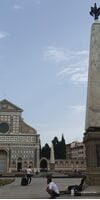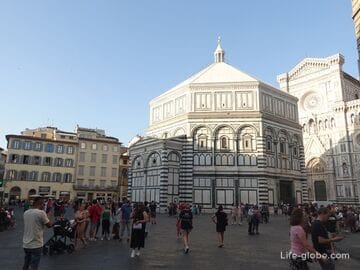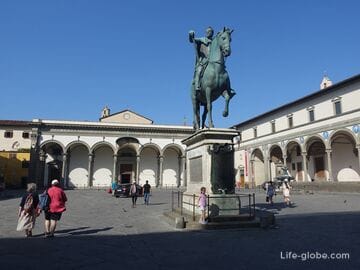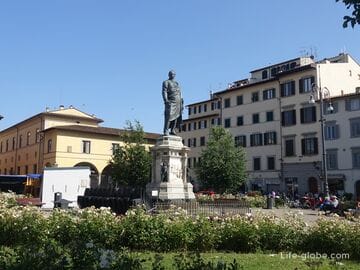Piazza Santa Maria Novella (Piazza Santa Maria Novella, Piazza Santa Maria Novella) is one of the main public, most charming and visited squares in Florence, surrounded by significant historical landmarks.
The square has been formed since 1287 due to the demolition of a number of houses. Later, the square became a venue for various celebrations and events, among which the Palio (Palio dei Cocchi) stands out - a race with carts similar to Roman chariots introduced by Cosimo I de' Medici in 1563, for which two marble obelisks were erected on the square. The last chariot race on the square took place in 1852.
Today, Santa Maria Novella Square is pedestrian; it is surrounded by bright historical buildings, including palaces, the basilica of the same name with a monastery and a cemetery, as well as the beautiful loggia of the former San Paolo Hospital, which now houses a museum.
In the buildings around the square there are shops, cafes and restaurants with outdoor tables, there are also accommodation facilities (hotels, apartments)
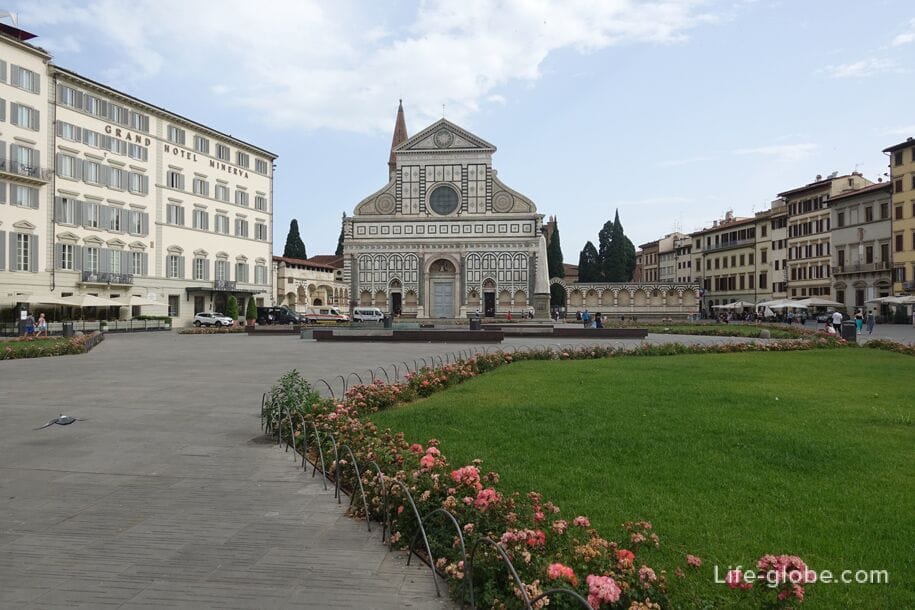
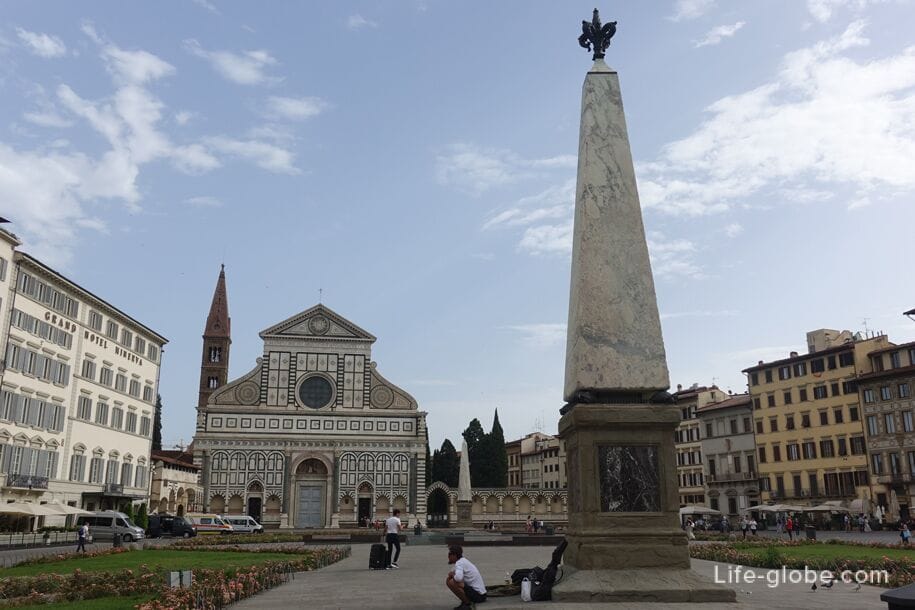
In the central part of the Piazza Santa Maria Novella there are flowerbeds, paths, benches for relaxation, there is a fountain and two obelisks of the sixteenth century, created from mixed marble from the city of Seravezza (mined in 1570) by the Italian sculptor Bartolomeo Ammannati, which are supported at the pedestals by bronze turtles created in 1608 by Giambologna.
Marble for the obelisk was commissioned in 1608 on the occasion of the marriage of Cosimo II de' Medici with Margaret of Austria. These obelisks replaced two wooden monuments temporarily erected in 1563 as markers of the venue of the chariot races held on the eve of San Giovanni (June 24). At the end of the eighteenth century, the obelisks were restored with the replacement of the bases with pedestals of gray stone with inserts of breccia Serravezza (the current ones of red Levantine marble date back to the 1960s). The golden lilies adorning the top of the obelisks date back to the nineteenth century.
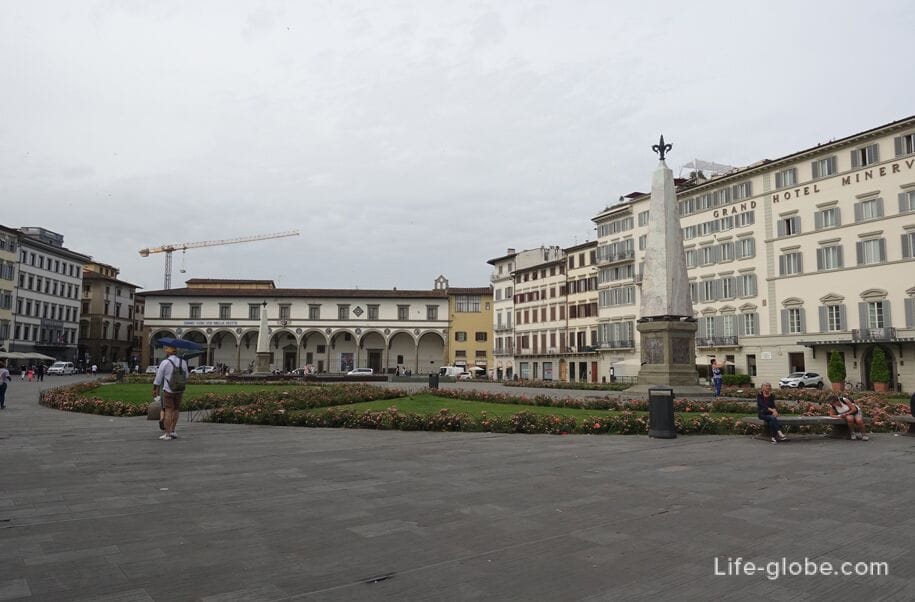
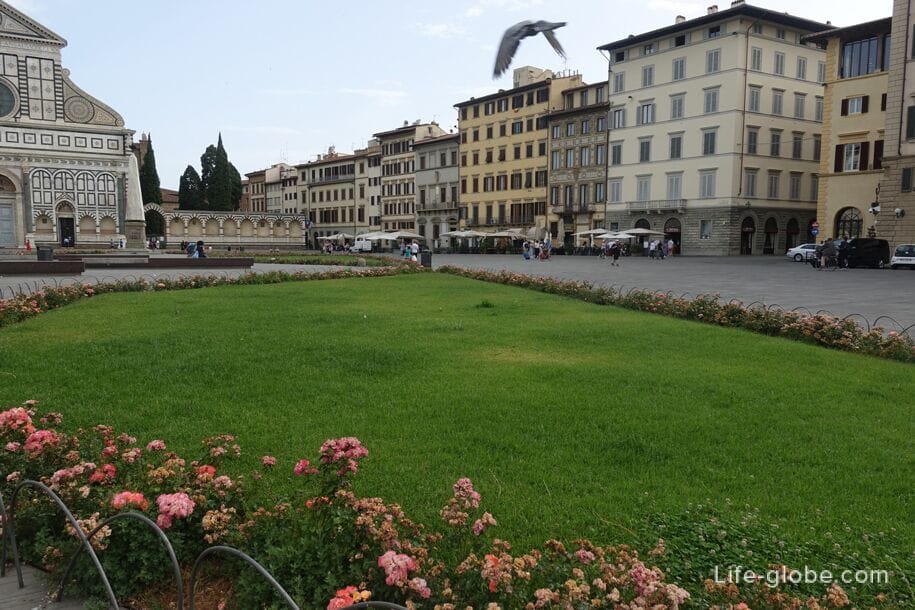

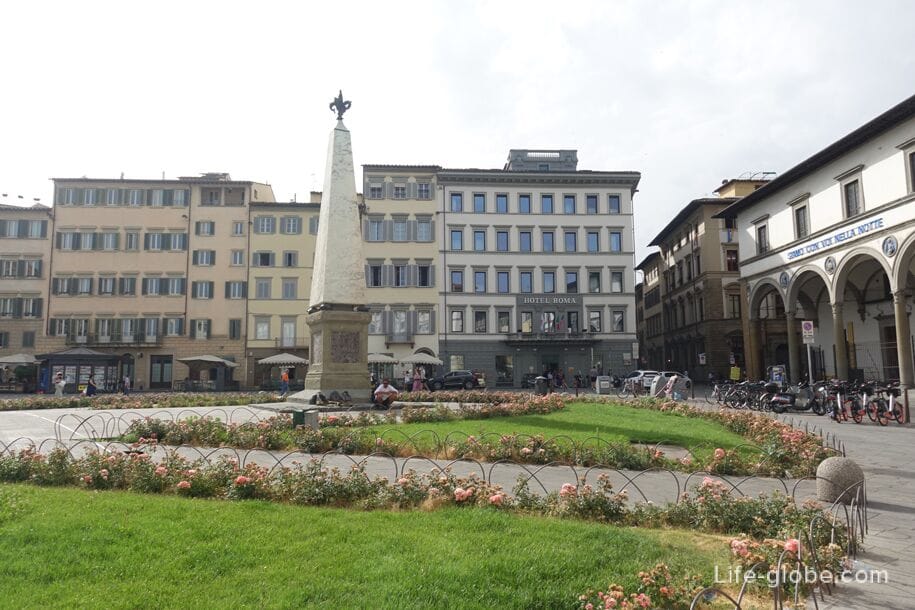
The main and most visited attraction of the square is the Basilica of Santa Maria Novella (Basilica di Santa Maria Novella), located on the north side of the square.
Santa Maria Novella is a historic monumental church in Florence, which was founded by Dominican monks and built in the 13th-14th centuries, and which is one of the most important in Florence and has famous frescoes from the Gothic and Renaissance eras.
Santa Maria Novella is a complex that includes: the basilica itself with chapels and a sacristy, adjacent monasteries, the chapter house, the Avelli cemetery with a chapel, the abode of the Dead (the former lower underground cemetery), a refectory, museum exhibitions and an old perfume and pharmaceutical workshop called the Pharmacy of Santa Maria Novella. More about the Santa Maria Novella complex…
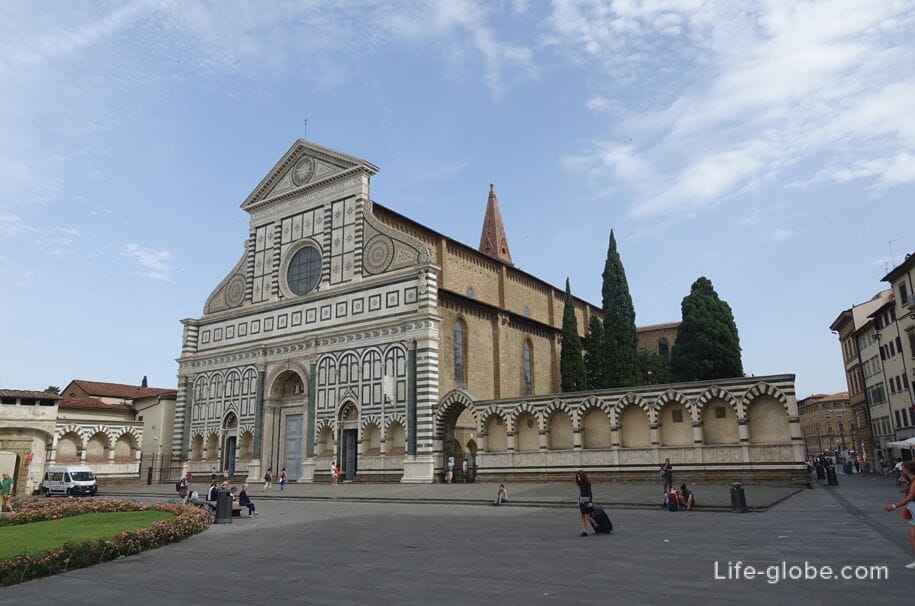
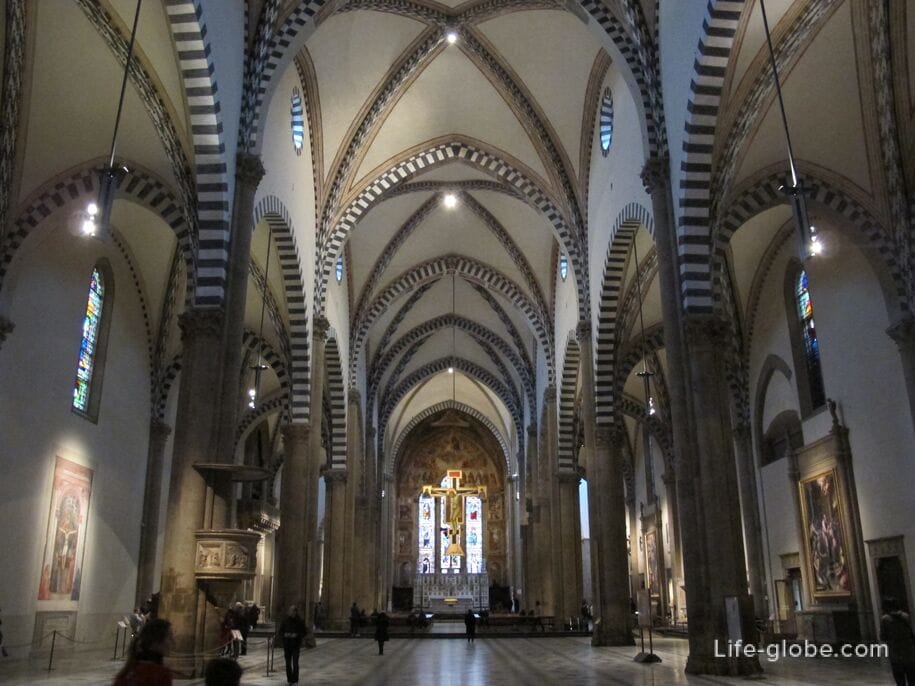

Opposite the basilica, on the south side of the square, stands the Hospital of San Paolo (Ospedale di San Paolo) - an ancient monumental complex founded in the early 13th century as a shelter for pilgrims, which belonged to the nearby Church of San Paolino (Chiesa di San Paolino).
At that time, the Basilica of Santa Maria Novella did not yet exist, and the hospital was located just outside the first city walls.
The area has undergone significant development with its inclusion in the walls and the nearby settlement of Dominicans, and since 1345 the San Paolo almshouse has become a real hospital where "poor feverish patients" were treated.
Since 1451, the hospital has been reorganized and enlarged, including the construction of a loggia built on the basis of the design of Michelozzo, which was inspired by the Florentine tradition of building loggias, including the loggia of the fourteenth century hospital of San Matteo (today Academy of Fine Arts of Florence) and especially the portico-loggia Orphanage by Brunelleschi. After the construction of the loggia of the hospital, it was so similar to the loggia of the Orphanage that for a long time the loggia of San Paolo was attributed to Brunelleschi.
After that, monasteries for women and men were built. Then the hospital was transformed into a girls' school. After the Nazi occupation, the structure underwent restoration, and the loggia was restored in 1967. In the 2000s, the complex was redeveloped for cultural purposes.
Today, the former hospital houses a cafe and a museum of the twentieth century (Museo Novecento) - a museum of modern art, where the works of Italian artists and sculptors of the 20th century are presented.

The Piazza Santa Maria Novella is overlooked by the loggia of the San Paolo complex, which is a sequence of ten arches supported by nine round ones with capitals and two square columns. Between the columns are tondi works by the Italian sculptor and ceramist Andrea della Robbia, which depict Saints Francesco, Lodovico, Antonio da Padua, Bernardino da Siena, Bonaventura, Elisabetta, Zita, Chiara and on two - Benini.
The upper part of the loggia is marked by a series of ten windows and is characterized by a marble bust of Grand Duke Ferdinando I de' Medici by the Italian sculptor Giovanni Bandini, dating from 1590.
Under the portico there are three almost identical main portals; only the entrance to the chapel of the hospital ward is crowned with a pediment with the coat of arms of judges and notaries, once patrons of the hospital.


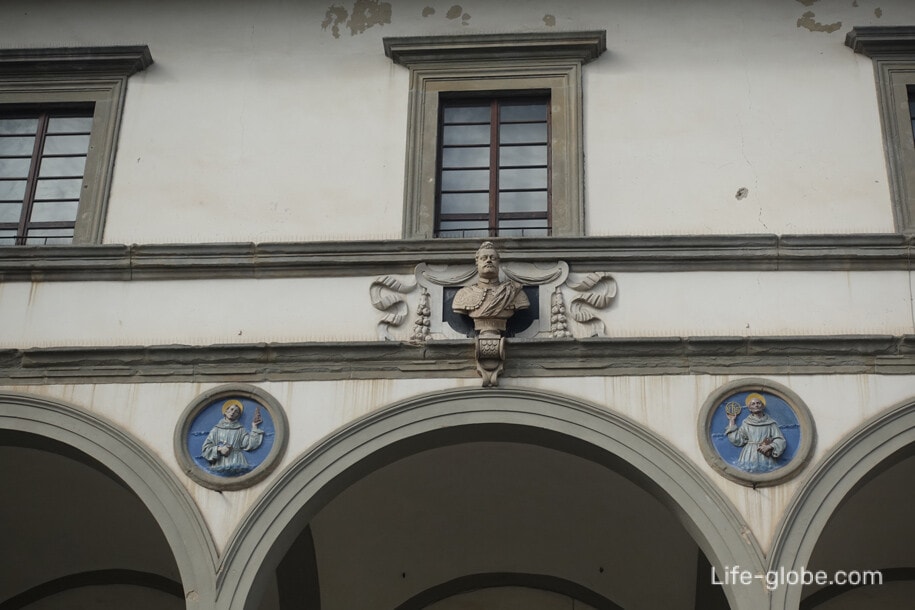
The eastern and western sides of Santa Maria Novella Square are formed by buildings, including historical ones.
Among the palaces on the square, the Pitti-Broccardi Palace (Palazzo Pitti-Broccardi), located to the left of the Basilica of Santa Maria Novella, is interesting. This is the former residence of Luca Pitti - before his move to the Pitti Palace in Florence, built by his order. One plaque is dedicated to him, and the other is dedicated to Gaetano Baccani, who lived here and died in the nineteenth century.
Also noteworthy is the 4-star Hotel Roma - Firenze at number 8, which dates back to the 1920s and is decorated with stained glass windows in the Art Deco style by Tito Cini (1920-1923). And the 4-star Grand Hotel Minerva, located on the opposite side of the square, is an interesting example of modern architecture of the turn of the fifties-sixties of the 20th century.
At the corner of the building facing the piazza and Via della Scala, there is a large tabernacle with a fresco by Francesco d'Antonio di Bartolomeo (now in copy) depicting the Madonna and Child and saints.
There are also hotels on the square:
Superb and city view 5-star The Place Firenze
4-star Hotel L'Orologio - WTB Hotels
4-star Hotel Santa Maria Novella - WTB Hotels
4-star Hotel Garibaldi Blu - WTB Hotels

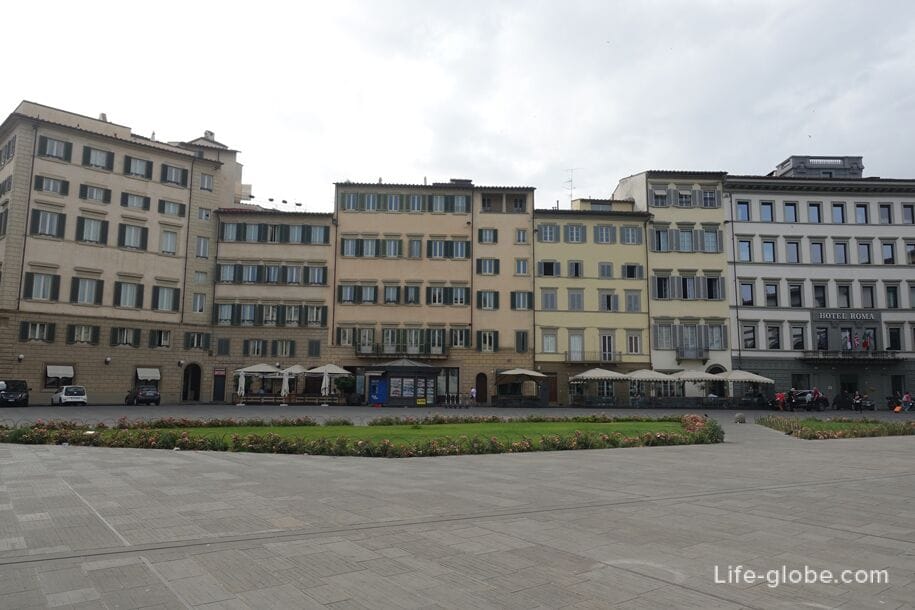
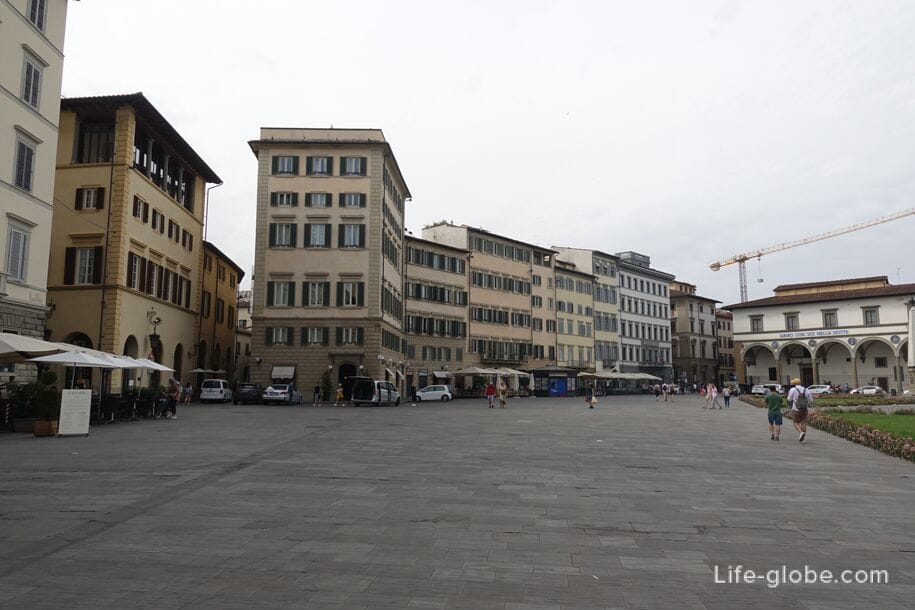

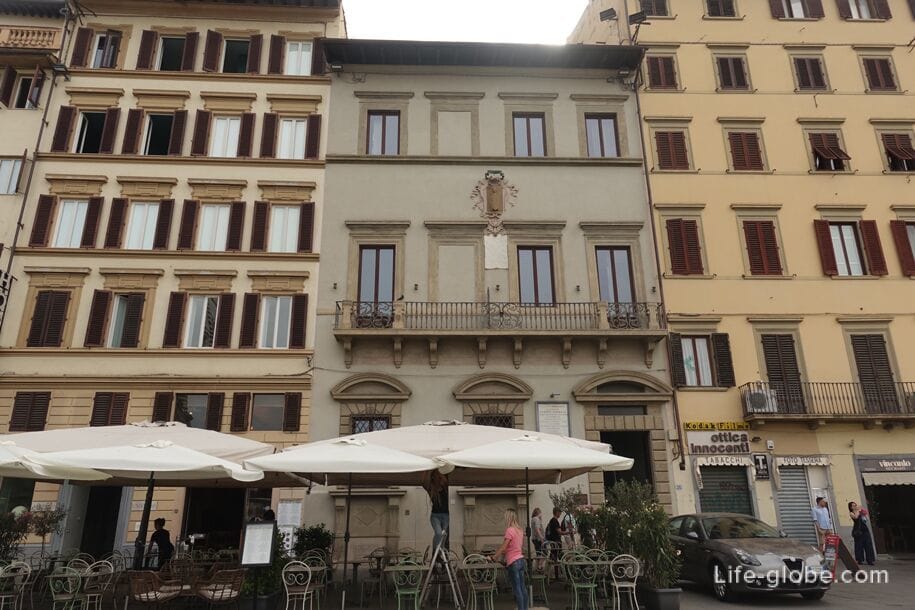

Practical Information
Santa Maria Novella Square hosts celebrations and various events.
The square is accessible to visitors 24 hours a day.
Santa Maria Novella Square is located in the historic center of Florence, near the Santa Maria Novella train station (Firenze Santa Maria Novella).
Coordinates of Santa Maria Novella Square: 43°46'24.6"N 11°14'57.9"E (43.773506, 11.249422).
All accommodation facilities in Florence (hotels, apartments, guest houses, etc.), including in the historical center of the city, near the main squares and more remotely from those, can be viewed and booked here




